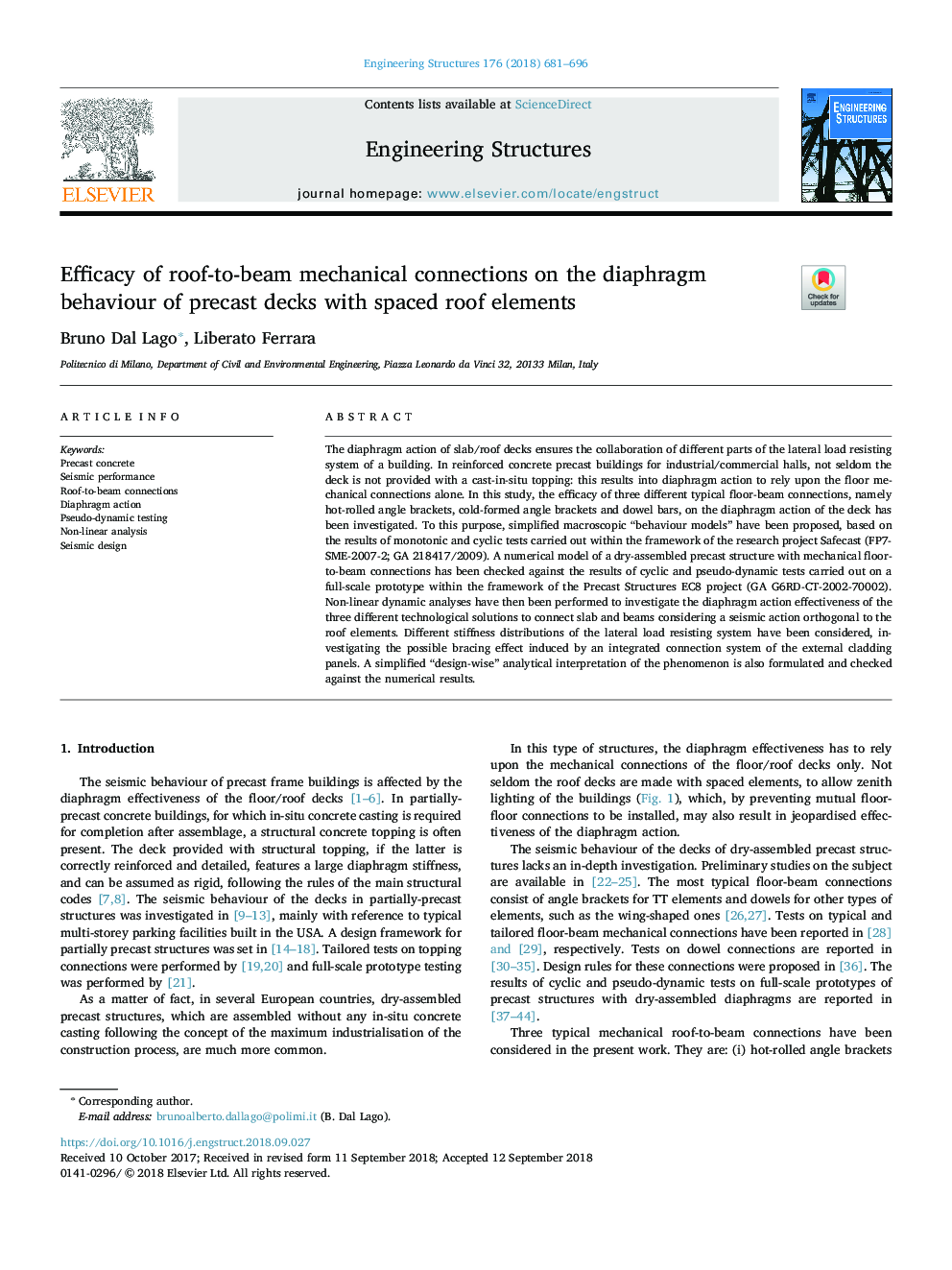| Article ID | Journal | Published Year | Pages | File Type |
|---|---|---|---|---|
| 11028927 | Engineering Structures | 2018 | 16 Pages |
Abstract
The diaphragm action of slab/roof decks ensures the collaboration of different parts of the lateral load resisting system of a building. In reinforced concrete precast buildings for industrial/commercial halls, not seldom the deck is not provided with a cast-in-situ topping: this results into diaphragm action to rely upon the floor mechanical connections alone. In this study, the efficacy of three different typical floor-beam connections, namely hot-rolled angle brackets, cold-formed angle brackets and dowel bars, on the diaphragm action of the deck has been investigated. To this purpose, simplified macroscopic “behaviour models” have been proposed, based on the results of monotonic and cyclic tests carried out within the framework of the research project Safecast (FP7-SME-2007-2; GA 218417/2009). A numerical model of a dry-assembled precast structure with mechanical floor-to-beam connections has been checked against the results of cyclic and pseudo-dynamic tests carried out on a full-scale prototype within the framework of the Precast Structures EC8 project (GA G6RD-CT-2002-70002). Non-linear dynamic analyses have then been performed to investigate the diaphragm action effectiveness of the three different technological solutions to connect slab and beams considering a seismic action orthogonal to the roof elements. Different stiffness distributions of the lateral load resisting system have been considered, investigating the possible bracing effect induced by an integrated connection system of the external cladding panels. A simplified “design-wise” analytical interpretation of the phenomenon is also formulated and checked against the numerical results.
Related Topics
Physical Sciences and Engineering
Earth and Planetary Sciences
Geotechnical Engineering and Engineering Geology
Authors
Bruno Dal Lago, Liberato Ferrara,
